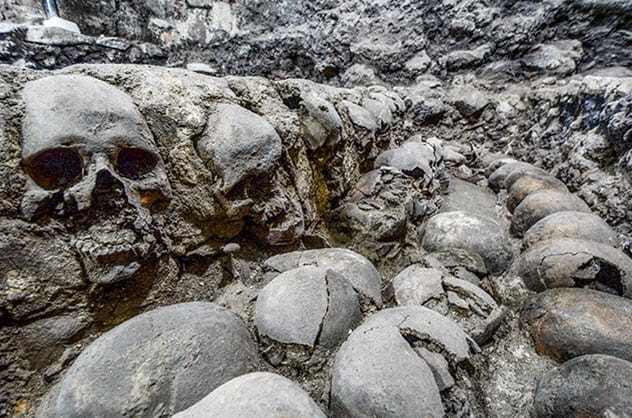From urban legends to ancient mythology, we use our imaginations to understand the world. We create stories to explain puzzling things and pass on important lessons. But sometimes, real life is more amazing than any made-up story. Here are ten times when the truth is stranger and more interesting than fiction.
Why Takako Konishi Died
The urban legend says Takako Konishi, a Japanese tourist, went to Minneapolis in 2001 after watching the movie Fargo. She supposedly traveled to North Dakota to find the money buried by a character in the movie.
What really happened to Takako is much more complex. She worked for a travel company in Tokyo. When the company closed, she struggled to find a new job and started drinking. [1]
She had a sad and complicated life. Some say she went to Minnesota because she had an affair with a married American businessman. The relationship ended, leaving her without love or a job.
In the US, she found a peaceful spot near Detroit Lakes, Minnesota, drank two bottles of champagne, and lay down in the snow until she died. (Detroit Lakes is about 80 kilometers (50 mi) from Fargo.)
Real stories like this are richer, sadder, and more complicated than a simple, cruel joke. But as they say, “Silly sells.”
The Americas: Utopia or Savagery?

Some people think that before Europeans arrived, Native Americans lived in a peaceful utopia, while others think they were savage monsters.
Neither view is true. Native Americans weren’t universally savage or perfect. These simple views don’t help anyone.
Did they have wars? Yes, like Europe. Human sacrifice? Yes, like Europe. Massacres? Yes, like Europe. The same is true for Asia, Africa, and Australia. [2]
They were human beings. Sometimes, they did bad things to each other. Other times, they invented writing and astronomy, built cities, and traded, just like people everywhere else. People have lived in the Americas for longer than we once thought, so it’s time to stop telling dehumanizing stories.
Catherine the Great: Empress or Nymphomaniac?

Spreading rumors about someone’s character has always been a powerful way to hurt them. People care a lot about “character” and its flaws. How would you feel about a leader who had sex with an animal? The British weren’t happy with the rumors about Prime Minister David Cameron.
Catherine the Great, empress of Russia, liked men, but she wasn’t a nymphomaniac. The rumor stuck anyway. One story said she died during sex with a horse.
This rumor started after her death and continues today. It’s often told as a funny little fact about historical figures.
In reality, Catherine the Great died of a stroke. Her amazing story as a notable monarch is ignored in favor of a scandalous lie. This shows that sex sells, even when it’s nonsense. [3]
The Dirty Collyer Brothers
The story of Homer and Langley Collyer is about brotherly love, hoarding, and urban life. But it’s often reduced to a saying: “You’re as dirty as the Collyer brothers.”
Without knowing their story, this saying means nothing. Even if you know the story, it’s sad to reduce their lives to a simple insult. [4]
Homer was a lawyer, and Langley sold and repaired pianos. After their parents died, they retreated from society and became reclusive.
Over the years, they collected a lot of stuff. Their Harlem brownstone became filled with newspapers, pianos, and furniture, hiding their bodies when they died. They were more than just a saying.
Darwin Award: Myth vs. Reality
The Darwin Awards recognize people who die in stupid ways, removing themselves from the evolutionary tree. But one of the first winners wasn’t real.
In 1995, the Darwin Awards told the story of a man who attached a JATO rocket to his car. When he turned it on, the car crashed into a cliff.
What an idiot! But it never happened. However, Bob Lazar’s story is real.
Lazar claimed he worked on a secret US project studying a crashed UFO. He may have contacted aliens, but he did attach a jet engine to his Honda. And he didn’t die, which is much cooler. [5]
Rosie the Riveter: The Real Story

When you think of “Rosie the Riveter,” you probably picture the woman in overalls with a polka-dot bandana showing off her muscles. But that’s not really her.
The woman in that image was on a World War II poster by Westinghouse Electric for only two weeks. It wasn’t until the 1980s that the poster became a symbol for feminism.
The woman in the Westinghouse poster was known as the “We can do it” lady. So, who is Rosie the Riveter?
Rosie was on the cover of a 1943 issue of The Saturday Evening Post, painted by Norman Rockwell. She symbolized the American women who filled jobs in industries while men fought in the war.
The real Rosie is better because she has a sandwich. And sandwiches make everything better. [6]
Mountain Giants and Dark Watchers
If you’ve hiked alone in the mountains, you might have felt like you were being watched or sensed danger when the weather changed. This happens often in the mountains.
When we are tired or unsure of our surroundings, our brains make us see threats. [7]
Hikers have claimed to see shadowy giant figures in the distance, stalking them as they hike.
This is actually a trick of the light called a “Brocken specter.”
Imagine being lost in the mist and seeing a giant haloed figure staring at you. It would be scary! But if you know about Brocken specters, you can take a picture and post it on Instagram.
Craig Shergold and His Greeting Card Cure

Even the most uplifting stories can have dark realities. Craig Shergold was a sick boy with brain cancer. He received millions of get-well cards from the public, which is where the story usually ends. But this story continued even after he was saved by surgery.
The Royal Mail gave the Shergold family their own postal code because of the massive amount of cards. At least 350 million cards have been sent.
What started as an uplifting event turned into a nightmare for Craig and his family. The news coverage became an obsession with “grief porn.” Sadly, Craig passed away this year from COVID-19. [8]
They’ll Come and Take Your Kids

In the 1990s, there was a scare in South Yorkshire and Scotland about “phantom social workers” who kidnapped children. The police investigated, but did they catch these kidnappers?
After 250 reports, not a single arrest was made. Police think only two reports were real and 18 were worth investigating. The rest was caused by media hype.
Moral panics, mass psychosis, and conspiracy theories seem to be increasing. Perhaps the “phantom social worker” phenomenon will return due to high-profile cases of child trafficking and kidnapping.
The story is terrifying, but the reality is more complex. [9]
Human Soap

Many tragic and important stories have come from the Holocaust. Embellishments shouldn’t be added. And yet . . .
The Amazon series Hunters was criticized for exaggerating the Holocaust. The writers made up scenarios that highlighted the Nazis’ brutality when their real-life actions were enough.
There’s a rumor that the Nazis used fat from their victims, mainly Jews, to make soap. This didn’t happen. [10]
Whether it was a rumor used by Nazi officers to scare inmates, or a postwar urban legend, we can be almost certain that this didn’t happen. Many awful things did happen, so let’s focus on what’s real.
These stories show that truth can be stranger and more compelling than fiction. From urban legends to historical events, the real stories often have more depth and complexity than the myths they inspire.
What do you think about these stories? Leave a comment below!










